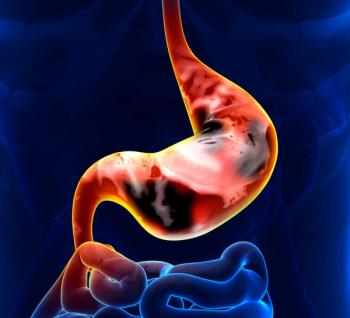
Oncology NEWS International
- Oncology NEWS International Vol 5 No 1
- Volume 5
- Issue 1
Studies Show Clinical Benefits of Gemcitabine in Pancreatic Cancer
NEW YORK--A novel nucleoside analog has demonstrated clinical benefits measured by reduction in pain, weight gain, and an improvement in performance status in patients with advanced pancreatic cancer.
NEW YORK--A novel nucleoside analog has demonstrated clinicalbenefits measured by reduction in pain, weight gain, and an improvementin performance status in patients with advanced pancreatic cancer.
Gemcitabine (Gemzar) has shown a broad spectrum of activity againsta range of solid tumors in both preclinical and clinical studies,Howard A. Burris III, MD, reported at the 13th annual symposiumof the Chemotherapy Foundation.
In phase I and II trials of patients with advanced pancreaticcancer, gemcitabine produced only modest response rates (in therange of 11%), said Dr. Burris, associate professor and directorof Drug Development, Brooke Army Medical Center, Cancer Therapyand Research Center, San Antonio.
Improvements in disease-related symptoms, however, have been fargreater, Dr. Burris said, as have correlative improvements inperformance status, weight gain, and pain control. These observationsled to the development of a clinical benefit endpoint to be usedin the prospective evaluation of gemcitabine in pancreatic cancer.
Dr. Burris described two trials in which clinical benefit endpointswere assessed in terms of pain (composite of analgesic consumptionand pain intensity), performance status (an improvement of 20or more points on the Karnofsky scale), and weight gain (7% ormore over baseline), all over the course of 4 weeks or longer.
In the first trial, 126 patients were randomized to receive gemcitabine(1,000 mg/m²) or fluorouracil (600 mg/m²) as a 30-minuteweekly infusion. Clinical benefit response was 23.8% among gemcitabinepatients, compared with 4.8% for those receiving fluorouracil.
Median survival was 5.65 months for patients receiving gemcitabineversus 4.41 months for those on fluorouracil. Among gemcitabinepatients, 18% were alive at 1 year, compared with 2% of fluorouracilpatients.
Gemcitabine was well tolerated, with only 15% of patients experiencinggrade 3 or higher nonhematologic toxicity and 23% experiencinggrade 3 or higher neutropenia, Dr. Burris said.
In the second study, a single-arm trial of gemcitabine in 63 patientswith fluorouracil-resistant pancreatic cancer, 27% showed a clinicalbenefit response, with minimal side effects. Only 9% developedgrade 3 or higher nonhematologic toxicities; 25% had grade 3 orhigher neutropenia.
"These studies confirm the positive effect of gemcitabineon tumor-related symptoms in patients with advanced pancreaticcancer, either as frontline therapy or for fluorouracil-resistantdisease," Dr. Burris said.
He added that other studies have indicated that the agent maybe useful in advanced non-small-cell lung cancers, especiallyin combination with cisplatin (Platinol), as well as in advancedovarian and breast cancers.
Gemcitabine is currently available from Eli Lilly and Companythrough a Treatment IND program for selected patients with advancedor metastatic pancreatic cancer. The agent has been recommendedfor approval by the FDA's Oncologic Drugs Advisory Committee,and is awaiting further FDA action.
How Gemcitabine Works
Although gemcitabine is structurally related to cytosine arabinoside(Ara-C), it forms more rapidly and at higher levels intracellularlyand, within the cell, persists at higher levels and for longerperiods than Ara-C.
"These differences in intracellular kinetics may explainwhy gemcitabine is active in solid tumors while Ara-C is not,"said Dr. Howard Burris at the Chemotherapy Foundation symposium(see story above).
The gemcitabine nucleotide incorporates into DNA, resulting inchain termination, the mechanism through which it is believedto exert its cytotoxic effect, he said.
Articles in this issue
almost 30 years ago
HCFA Reevaluations May Affect Chemo Administration Cost Codesalmost 30 years ago
Breast Cancer Info Now on Internetalmost 30 years ago
HDC/ABMT Has Benefits in Multiple Myelomaalmost 30 years ago
Clinical Trial to Study MoAb 17-1A as An Adjuvant to Colon Cancer Therapyalmost 30 years ago
Reporting of Study Comparing Casodex, Eulexin Is Questionedalmost 30 years ago
Limits on Tamoxifen Duration Questionedalmost 30 years ago
ACRO Forecasts Radiologist Surplusalmost 30 years ago
Potency Status Before RT, Not Dose, Determines Post-RT Functionalmost 30 years ago
Dr. Klausner Outlines Goals for NCIalmost 30 years ago
Difficulties in Translating Relative Risks Into Absolute RiskNewsletter
Stay up to date on recent advances in the multidisciplinary approach to cancer.

















































































